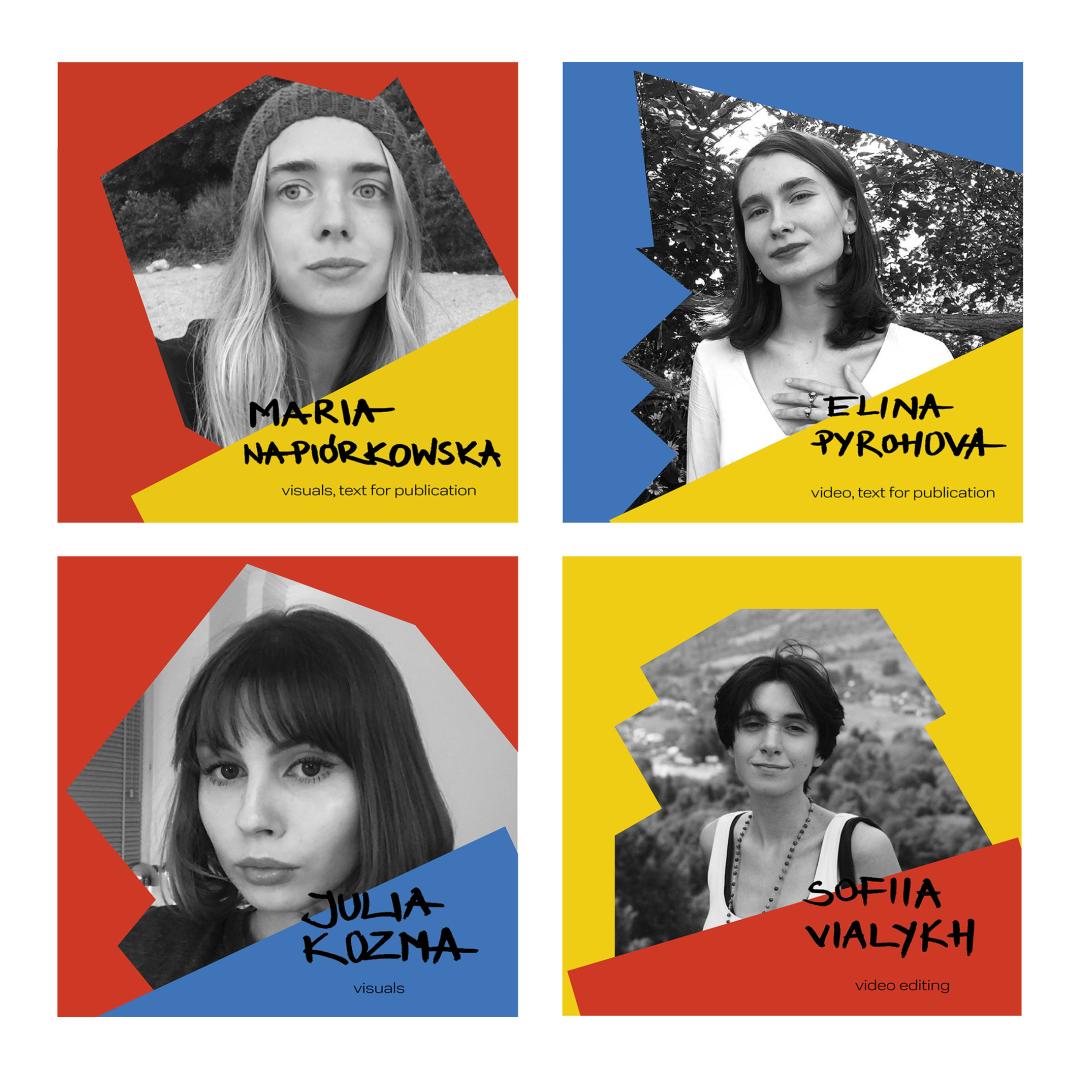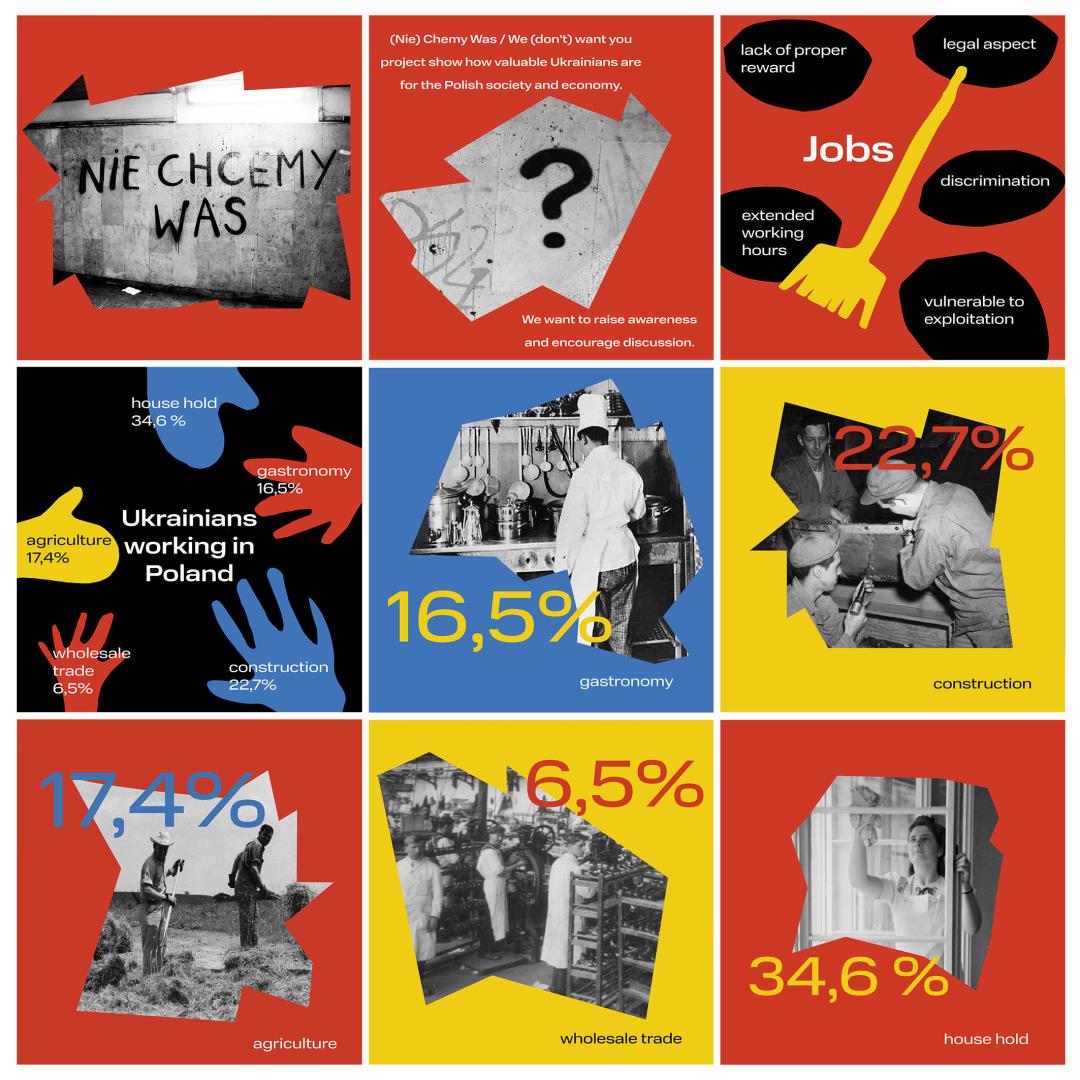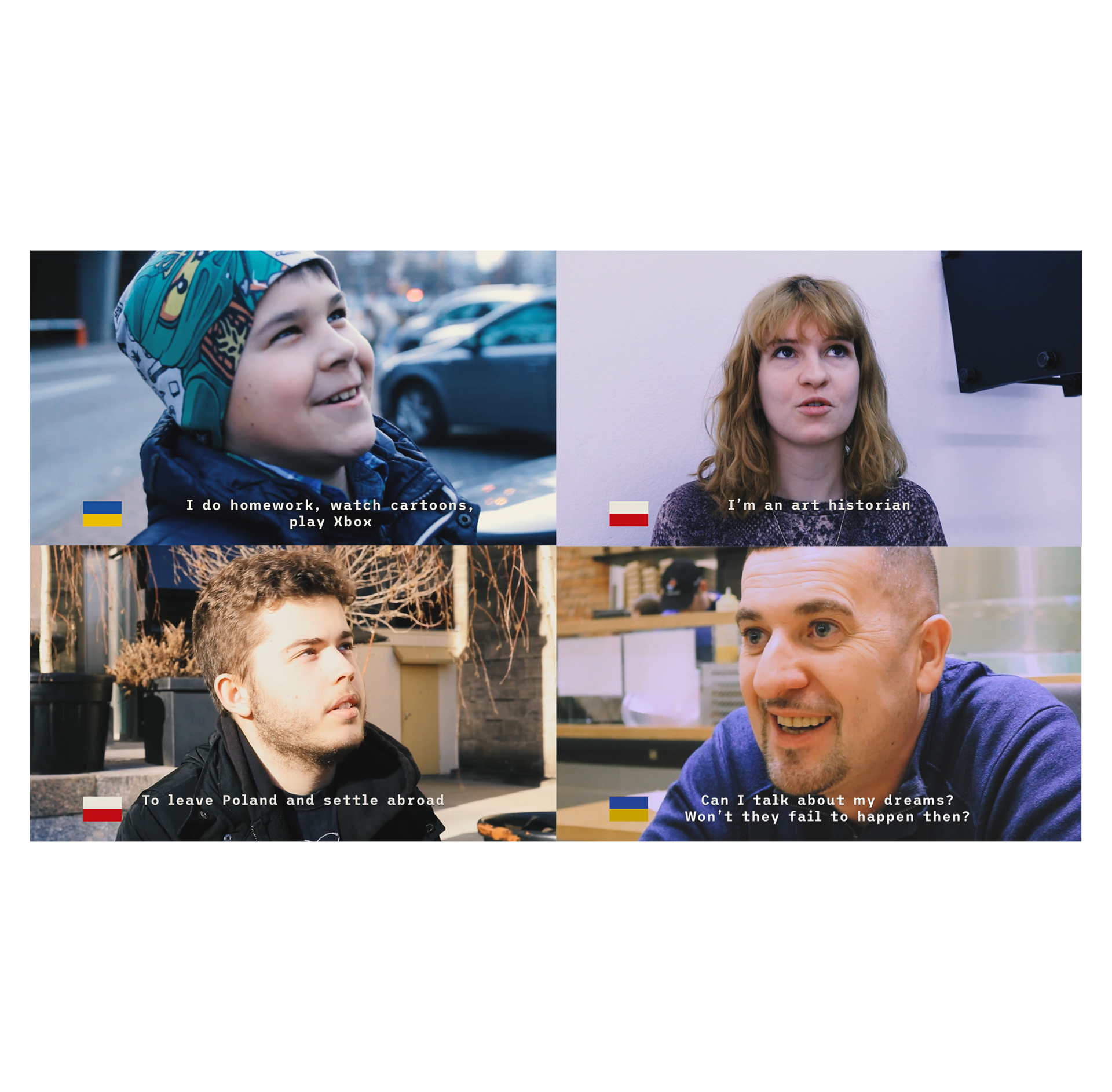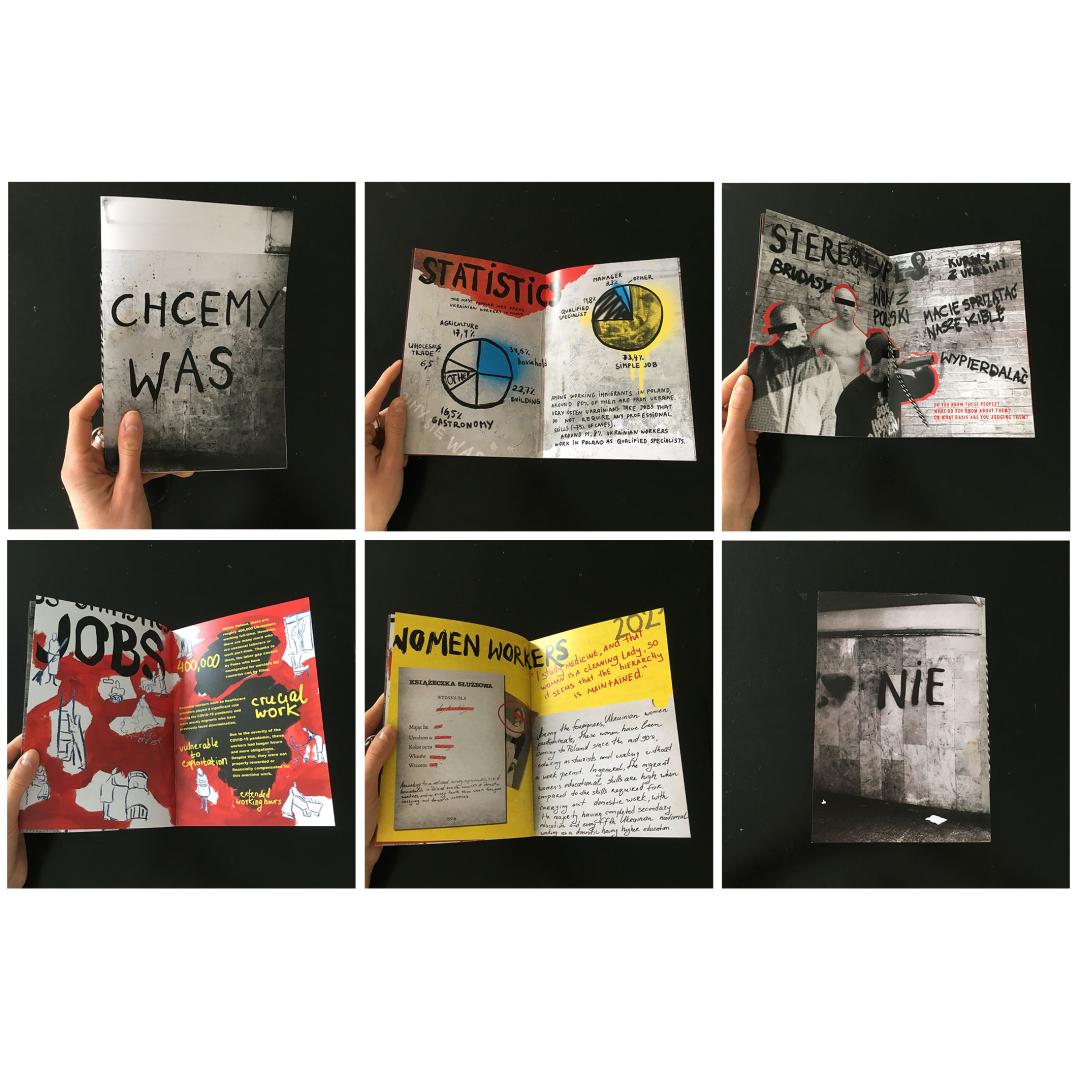(Nie) Chcemy Was / We (don’t) want you
Basic information
Project Title
Category
Project Description
‘We don't want you’ project is about Ukrainian migrant workers facing discrimination in Poland. It is designed by a Ukrainian and Polish student team. We want to raise a discussion to reconsider the importance of migrants from Ukraine and thus show how valuable they are for the Polish society and economy. Our design is not mute, it has a societal impact. We want to promote the vision of creating sustainable opportunities and working conditions for all. We want to make a point that we are all the
Geographical Scope
Project Region
Urban or rural issues
Physical or other transformations
EU Programme or fund
Which funds
Description of the project
Summary
Ukrainians who immigrate to Poland to work there make up a large percentage of the Poland’s workforce. However, they face discrimination based on their nationality, harmful attitudes and stereotypes. People are not aware of how crucial their work is for the Poland’s economy. Our goal was to create a project based on qualitative and quantitative data to replace stereotypes with facts. We believe that to contribute to the establishment of inclusivity, we have to bring this issue to public notice.
During our project devising, Russia started a war against Ukraine, which changed the situation due to the huge amount of Ukrainian refugees arriving to Poland. Thus, it is especially important that the message of our work reaches the Poles.
Key objectives for sustainability
To achieve real sustainability we must start by transforming the social sphere and show that we all cohabit the same planet and go beyond our ‘tribal’ divisions. We want to promote a vision where laws and working conditions should be the same for everybody and no one should be discriminated against. The problem of inequality and exclusion is universal.
Key objectives for aesthetics and quality
The aesthetic of the project is based on handmade style. Analog cut-outs, hand-written text, graffiti make it imperfect and more human. The visual style conventionally associated with aggression is used to convey a positive message about Ukrainian citizens. The sprayed typography is combined with the playful style of cutouts, which together with the raw documentary video with interviews contribute to the not sophisticated but easy to approach style. Our design is not mute. We want to speak up and be heard. Our audience is our citizen fellows
Key objectives for inclusion
We want to encourage people to reconsider the importance of migrants from Ukraine and thus show how valuable they are for the Polish society and economy, simultaneously presenting them as inherently equal to the native Poles. We interviewed both Ukrainians and Poles to show that the two nations strive to achieve the same goals. In consequence, inclusion, citizen engagement thus create a natural alliance of the two.
Results in relation to category
We plan to publish a social campaign on the Humans in the EU organization's social media and put zines in cafes and libraries. The documentary video can function with the entire campaign as well as independently, so we plan to submit it to additional exhibitions. During our project Russia started a war against Ukraine, which changed our idea in a broader sense. The project seems to be particularly important due to the huge amount of refugees arriving in Poland. Showing them support is crucial now. Using design as a tool for social transformation is extremely relevant.
How Citizens benefit
We interviewed both Ukrainians and Poles to show that the two nations strive to achieve the same goals. We asked the same questions to Poles and Ukrainians about their dreams, fears, and plans, indicating that we as humans are very similar. In consequence, inclusion, citizen engagement thus create a natural alliance of the two nations. Involvement of citizens in our project strengthens the bond between Poles and Ukrainians.
Physical or other transformations
Innovative character
We used graffiti, which is conventionally considered aggressive to present a positive message. The offensive title is used as a provocation to engage the viewer, later the offensive presentation is continued with the aesthetics of the project, but when one examines the substance of the graffiti and zines, he sees a very positive message about the Ukrainian minority. We used graffiti typography and rough style to present facts. In the documentary video we asked the same questions to Poles and Ukrainians about their dreams, fears, and plans, indicating that we as humans are very similar.
Learning transferred to other parties
The subject of our research was Ukrainians working in Poland. We wanted to consider inequalities and discrimination. The purpose of the project was to appeal for equal rights, to make Poles aware of the important role that migrants play for our economy, and to strengthen ties between Poles and Ukrainians. To achieve this, we used various methods, building the project based on various media. The first zine was created, printed to deliver to cafes. This small publication easily presents statistics and facts. Then we created a social campaign dedicated to social media, as well as a documentary video with interviews with Ukrainians and Poles. The strong, provocative visual style was meant to attract and encourage discussion. The message of our video is uplifting, it shows the universal truth that we are so similar and we strive to achieve similar goals. All parts can function both together and independently, so we see great potential in further showing the individual parts of the project.




